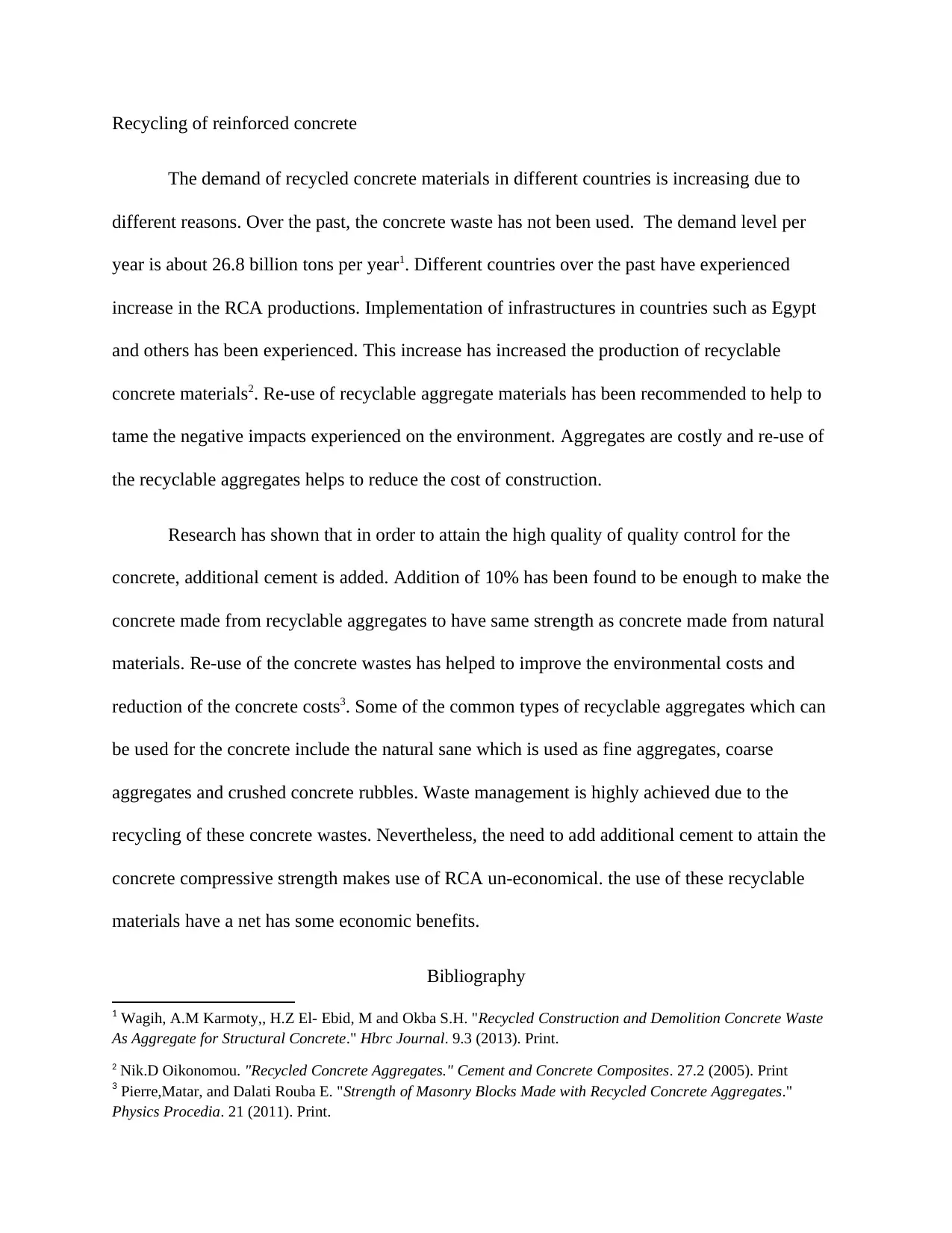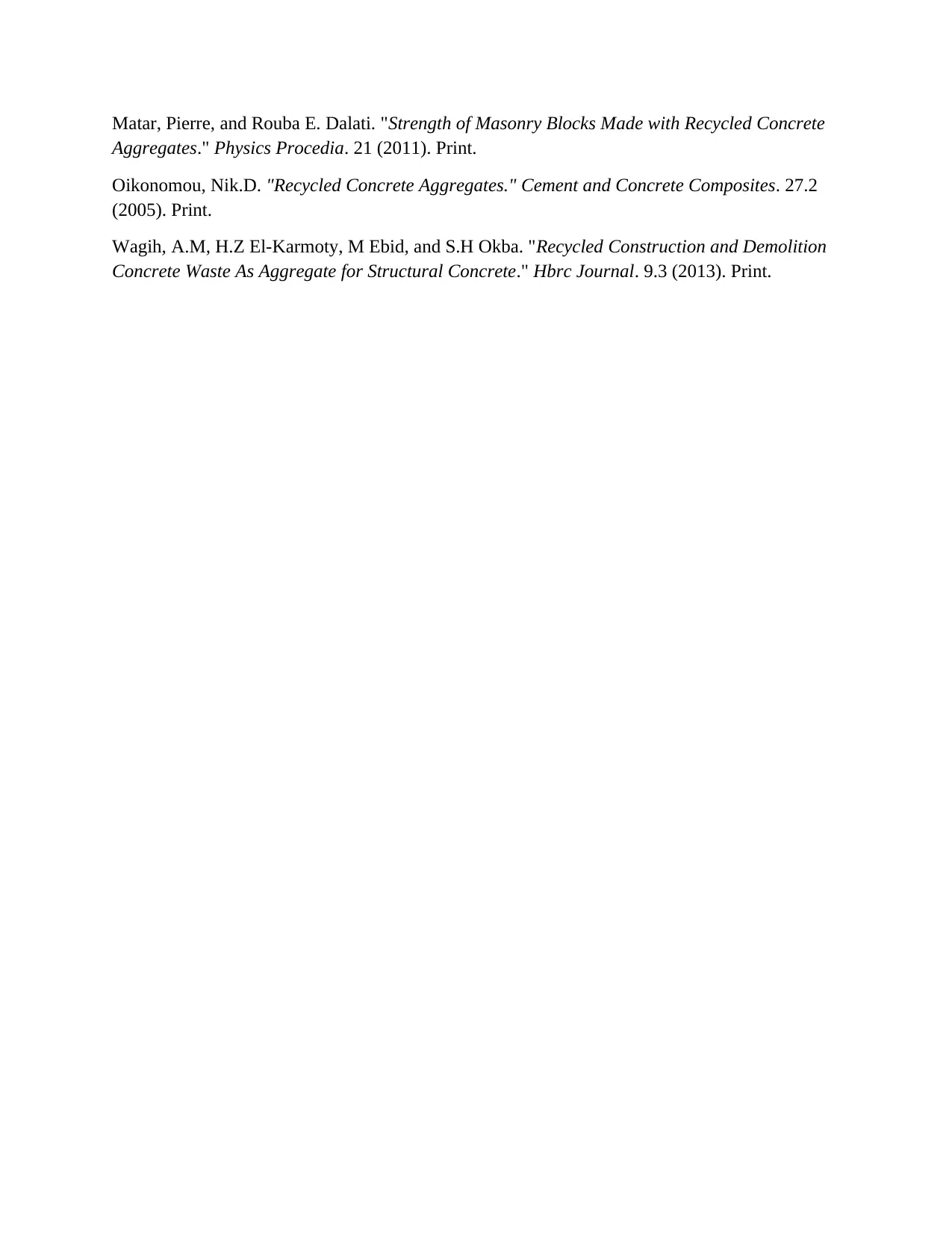HBRC Journal Report: Recycling Reinforced Concrete and RCA
VerifiedAdded on 2022/09/15
|2
|364
|15
Report
AI Summary
This report examines the increasing demand for recycled concrete aggregate (RCA) and its utilization in various countries. It highlights the environmental and economic benefits of reusing concrete waste, including cost reduction and waste management improvement. The report discusses the properties of RCA, such as natural sand, coarse aggregates, and crushed concrete rubbles, and the need for additional cement to achieve desired compressive strength. It references research indicating that a 10% cement addition can make RCA concrete as strong as concrete made from natural materials. The report also acknowledges the economic benefits of using RCA, while noting that the need for extra cement can make its use less economical. The provided bibliography lists key research papers on the subject.
1 out of 2







![[object Object]](/_next/static/media/star-bottom.7253800d.svg)